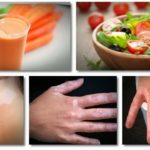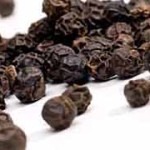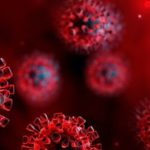Does eating fish with milk cause vitiligo
This article will explore the connection between fish and milk consumption and vitiligo. We’ll help you to identify any lifestyle factors that may be triggering your condition by discussing a few key factors.

Why milk is avoided after eating fish?
There are a few reasons why milk is avoided after eating fish. First, milk can spoil quickly when it comes into contact with fish. This can cause nausea and vomiting. Additionally, the proteins in milk can bind to the toxins in fish, making them more difficult to remove from the body. Finally, the fat in milk can increase the absorption of toxins from fish. For these reasons, it is best to avoid drinking milk after eating fish.
Does eating fish with milk cause vitiligo?
There is no scientific evidence to support the claim that eating fish with milk causes vitiligo. However, some people believe that this combination can trigger the development of the condition.
Milk contains a protein called casein, which some experts believe can interfere with the absorption of certain nutrients, including vitamin B12. This vitamin is essential for healthy skin and hair growth. A deficiency can lead to a number of skin problems, including vitiligo.
While there’s no concrete evidence that consuming fish and milk together causes vitiligo, it’s best to err on the side of caution and avoid this combination if you’re concerned about your skin health.
Is Fish bad for vitiligo patients?
Patients with vitiligo may be wondering if fish is bad for them. The short answer is no, fish is not bad for vitiligo patients. In fact, fish is a good source of protein and omega-3 fatty acids, which are beneficial for overall health.
That being said, there are a few things to keep in mind when it comes to eating fish with vitiligo. First of all, it’s important to choose fresh, wild-caught fish whenever possible. This will ensure that the fish doesn’t contain any harmful chemicals or toxins.
Secondly, some vitiligo patients may be sensitive to certain types of fish. So, it’s important to experiment and see what works best for you. If you find that you react negatively to a certain type of fish, simply avoid it in your diet.
Overall, there’s no need to worry about whether or not fish is bad for vitiligo patients. As long as you take a few extra precautions, you can enjoy all the benefits that come with eating this delicious and healthy food!
Can Vitiligo patients drink milk?
Yes, vitiligo patients can drink milk. Milk is a good source of nutrition and can help to improve the appearance of skin affected by vitiligo. However, it is important to speak to a doctor or dietitian before making any changes to your diet.
Foods to avoid if you have vitiligo
There is no definitive answer to this question, as everyone’s vitiligo and body chemistry is different. However, some people with vitiligo find that certain foods can trigger or worsen their condition. If you have vitiligo, you may want to avoid or limit the following foods in your diet:
-Spicy foods: These can cause irritation and inflammation of the skin, which can aggravate vitiligo.
– citrus fruits: The acidity in citrus fruits can also irritate the skin and trigger vitiligo flare-ups.
-Tomatoes: Some people with vitiligo find that tomatoes are a trigger food for their condition.
-Stress: While not a food per se, stress can worsen vitiligo and trigger new patches of depigmentation. Try to relax and de-stress as much as possible.
Here are some foods that are super helpful for your body if you have Vitiligo.
So, shall you eat fish and milk if you have Vitiligo?
There is no scientific evidence to support the claim that eating fish with milk causes vitiligo. However, some people believe that this food combination can trigger the condition. If you’re concerned about developing vitiligo, it’s best to avoid eating fish with milk.











